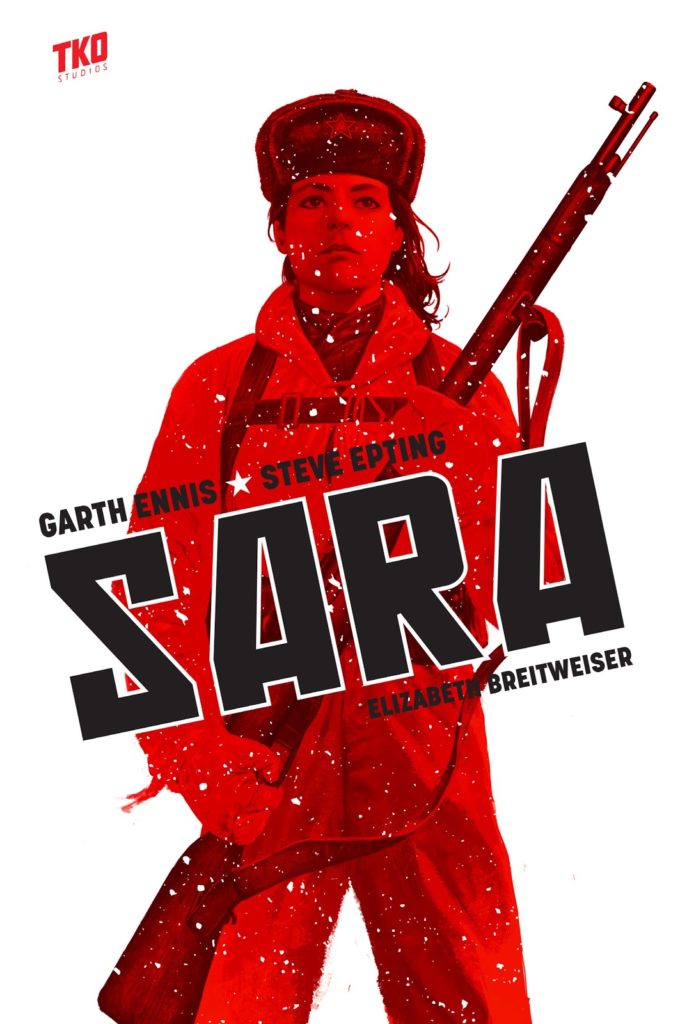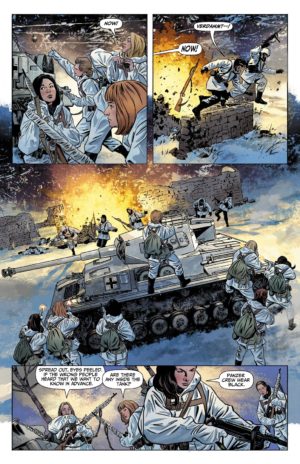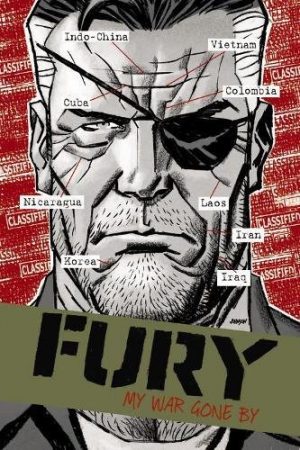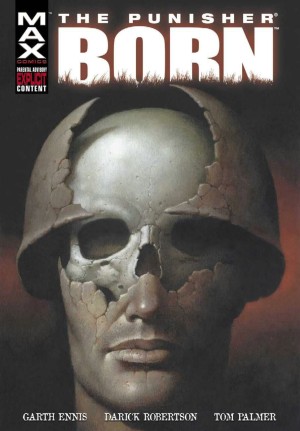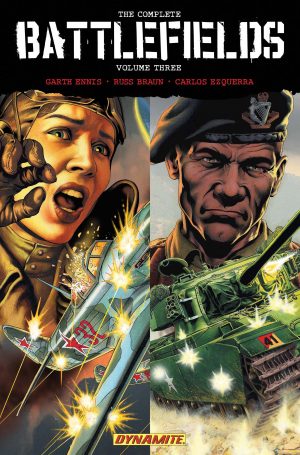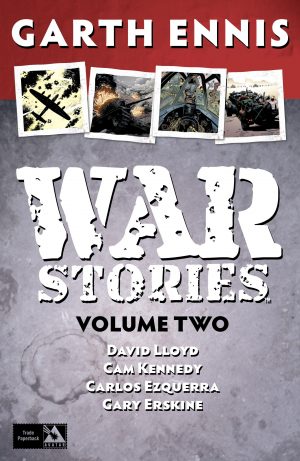Review by Karl Verhoven
In the winter of 1943 the German siege of Leningrad is entering its second year, and Sara is the best shot in a troop of Russian female snipers operating in appalling conditions, against what seems to be no end of invaders.
Sara is complicated, making little attempt to ingratiate herself with colleagues who all respect her phenomenal talent and calmness under pressure. She fits neatly into the categorisation of war hero similar to so many others Garth Ennis has created over the years, doing all they can to save their country, while caring nothing for the political ideology that accompanies it in World War II. She keeps her thoughts largely to herself, but Steve Epting is an artist who thrives on nuance, and we learn much about Sara just from the way she’s drawn. He’s astoundingly intuitive about the way she stands, the little glances she gives and the expressions on the faces of others. In the past Ennis’ war stories have been drawn by some extremely good artists, but very few have brought the people to life so expressively. Adding to his strengths is the visual imagination resulting in glorious panel compositions, so many of them resembling individual paintings. A minor problem, given the realism Epting aims for in all other respects, is a tendency to glamorise Sara and her colleagues, each of them a beauty when the squads of men are more ordinary grunts. Really sympathetic colouring from Elizabeth Breitweiser also helps, reflecting the mood by giving the earlier, more innocent scenes a brightness lacking in the present of 1943.
Ennis has researched Sara’s expertise to a depth that extends far beyond the sit and wait assumptions most make about sniping. An early scene has her teacher run through the order any troops should be killed, which is enlightening. The Sergeant goes first because the men look to them. “Then the machine gunner. Then his assistant. After that anyone goes near that weapon, you kill them”, he continues, “then the officer just in case they start listening to them”. Several pages later we see Sara putting that into devastating practice.
It’s telling that Ennis has titled this after a person, separating Sara slightly from his other war stories. While he’s created engaging characters in the past, his concern has been the plot, placing his casts in situations that amplify their heroism, either through participation in events known to historians or mocked up versions. Sara is different, a study of who she is and how she changes. She’s a still river who runs deep, being killed internally in small increments, her duty the only thing suppressing a festering hatred of the system she’s defending. It’s compelling tragedy, yet there’s enough accompanying drama to meet action requirements, and right at the end Ennis drops a bombshell explaining much about Sara.
That Sara is printed at slightly larger than standard trade size is nice, and certainly good for Epting’s art in one sense. However, the production isn’t all it might be, and some pages suffer from their inner edges being too close to the spine, which impairs reading and appreciation. Beyond that, if you’ve not shared Ennis’ fascination for war stories, but have enjoyed his writing of other genres, Sara or one of his War Stories collections is well worth your time sampling to see why his war material is so good.
